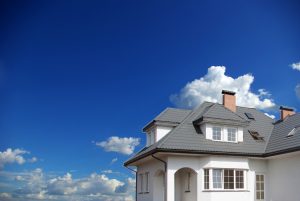 In 2017, UK households borrowed a total of £93 million in second mortgages on average each month. Taking out a second mortgage is a common way to raise finance for personal or business purposes, using your existing property as collateral.
In 2017, UK households borrowed a total of £93 million in second mortgages on average each month. Taking out a second mortgage is a common way to raise finance for personal or business purposes, using your existing property as collateral.
The amount you can borrow on a second mortgage is less than your first mortgage and the duration of the loan is typically less. Failing to keep up with repayments can have a detrimental impact on your credit rating, incur late fees and put your property at risk of repossession.
What is a second mortgage?
A second mortgage is a loan, like your first mortgage, that you get in addition to your current mortgage. As with the mortgage you already have, a second mortgage will be secured against your home and therefore if you do not keep up with repayments, the lender may have a stake in your property and be able to repossess it in order to cover the money they have lent to you.
It is known as a second mortgage or a ‘second charge mortgage’ because it is the second set of payments charged every month. So when it comes to making your monthly repayments, your first mortgage is the first payment that comes out and your second mortgage is the second payment that is collected by your loan provider. Since it is the second priority, the amount you can borrow as a loan-to-value is less than a first mortgage.
A lot of the confusion lies in whether a second mortgage cancels out the first. A second mortgage does not replace the first one; it is actually separate debt. Therefore, if you take one out you will have two loans secured against the same property.
Unlike your initial mortgage which is used primarily to service your property, the money from a second mortgage is yours to spend as you see fit. Households typically use money from second mortgages for home improvements, debt consolidation and to fund other lifestyle purchases such as weddings, holidays and giving money to their children.
How does it work?
It depends on the lender, but the majority of lenders offer second mortgages which can last up to 30 years. This will also depend on how much you borrow.
In order to qualify, you must:
- Be a homeowner – you do not actually have to live in your property, but you have to be the legal owner.
- Pass an affordability check by the lender – the lender will review your credit history and your current income and your expenses (including your current mortgage payments). They will do this in order to make sure you can actually afford to make the repayments on top of everything else. How much you will be able to borrow and on what terms will in part be dependent on this affordability check.
- Have equity in your home – equity is the stake in your home which you own outright. It is how much your home is currently worth, minus what you have left to pay on your mortgage. When you take out a second mortgage, you will be borrowing against the equity you had built up in your home and you can only borrow against this and not the full value of your home. So, the more equity you have on your home, the more you will be able to borrow since the rest of your house’s value is tied up in the mortgage, meaning that it cannot be used a security.
Alternatives to second mortgages
There are similar products to second mortgages in the form of loans that are secured against your home or car. These can also be classified as home improvement loans and debt consolidation loans.
Bridging finance can be a type of secured loan against your property but it is commonly used for just a few months until more funding becomes available such as buying property at an auction or moving home before your own property has sold.
For property developers, the role of development finance is used in order to build up a fresh plot of land and develop it into new residential property or offices. Again, this is secured against the property in question and can be classified as a second mortgage if the developer has another mortgage in place already.
